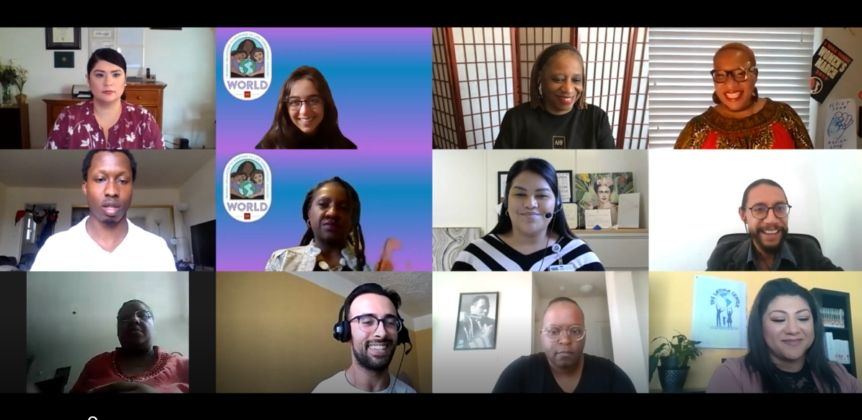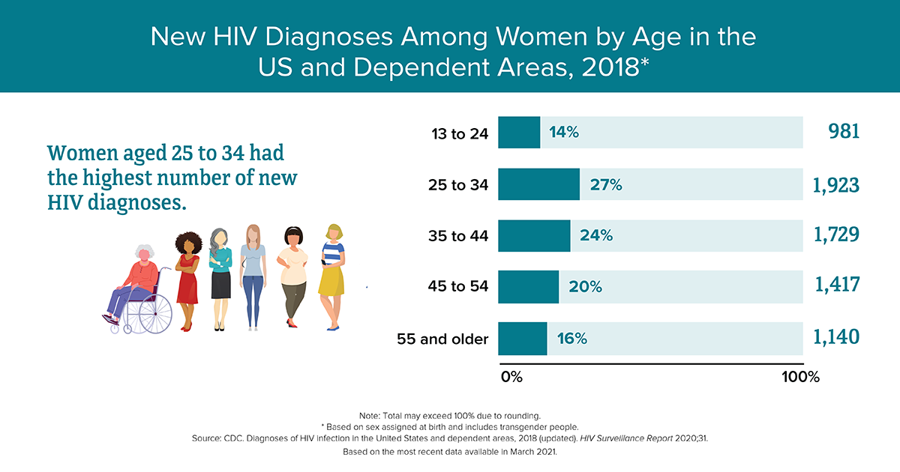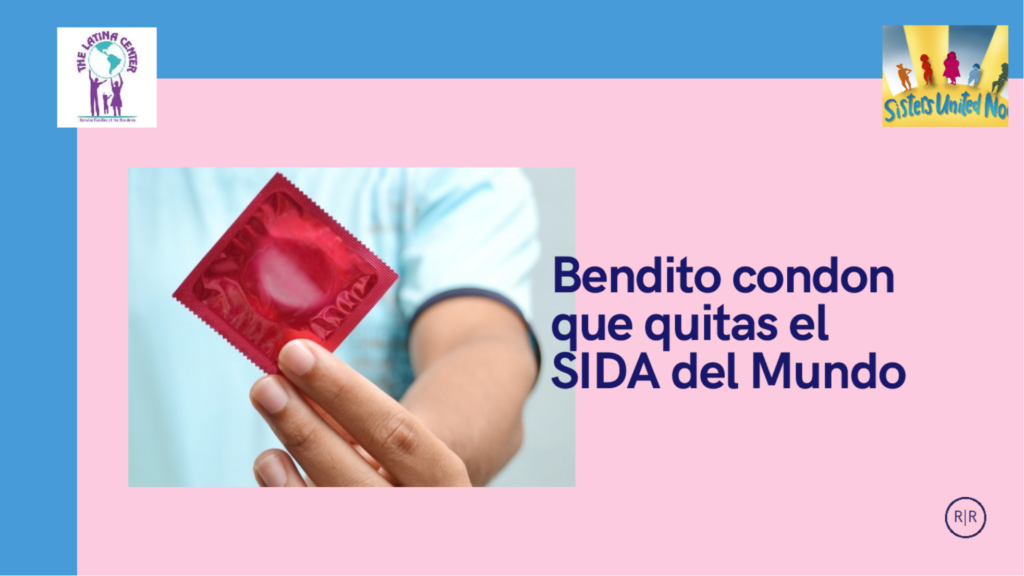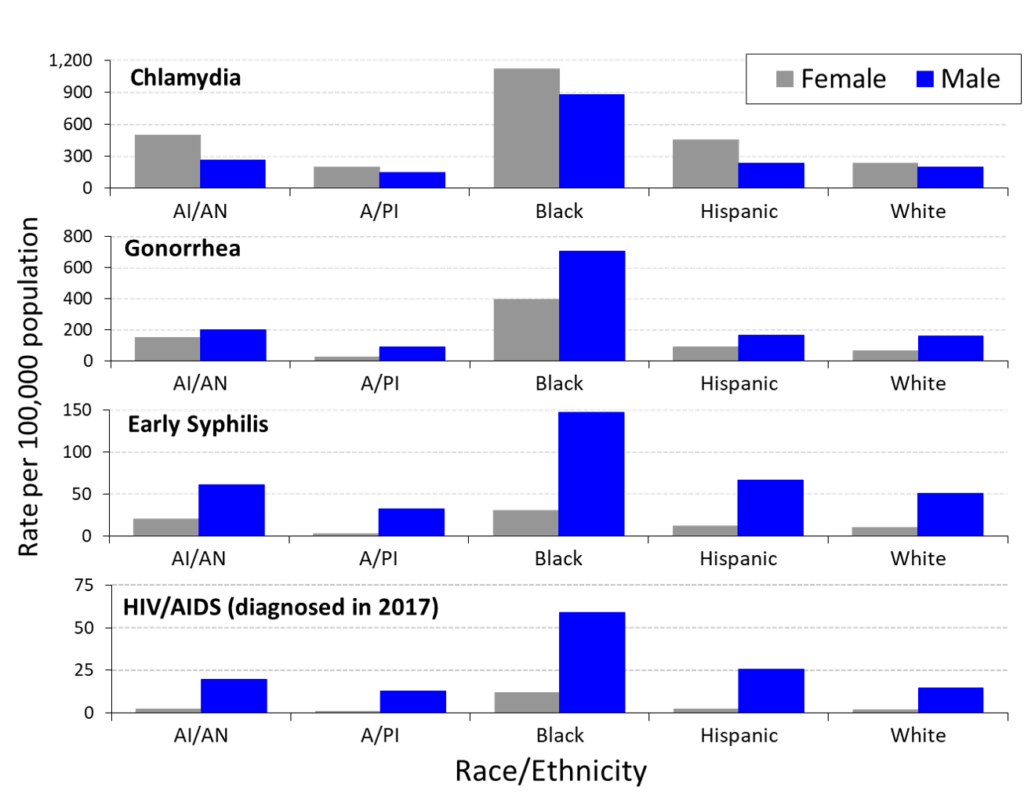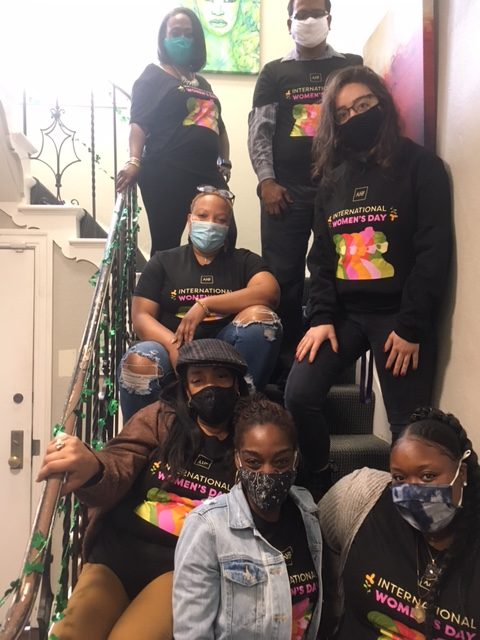Find out what we learned at our Legislative Update in honor of #NWGHAAD!
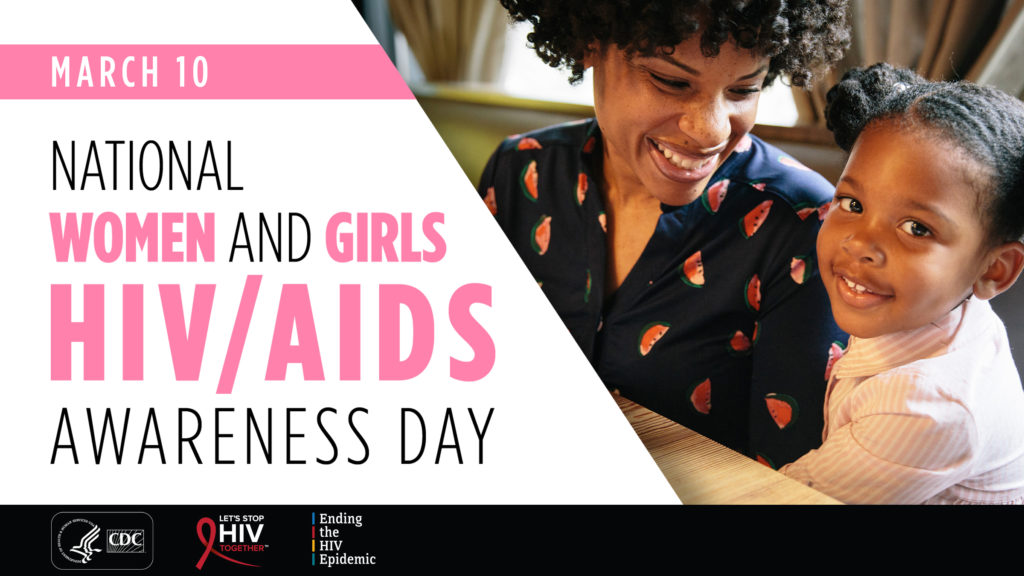
Our legislative update in honor of National Women & Girls HIV/AIDS Awareness Day took place yesterday, featuring:
- Tatyana Kalinga, District Director for Congresswoman Barbara Lee
- Caleb Smith, Special Assistant to Mayor Libby Schaaf
- Ingrid Floyd, WORLD Executive Director
- Erika Ramirez, Program Coordinator at The Latina Center
- Sylvia Castillo, Senior Manager of Government + Community Affairs at Essential Access Health
- Jenna Rapues, Director of Gender Health SF
- Tracy Jones, Midwest Director and National Director of Advocacy at AIDS Healthcare Foundation
With WORLD’s Policy & Advocacy Manager Dr. Demisha Burns moderating, and spoken word performances from Julie Mixon, Member of the Inaugural WORLD Leadership Institute and Brenda Ramirez, Student & SIHLE training graduate. Spanish translation was provided by Emiliano Bourgois-Chacon and Abraham Pérez-Aragón.
On the federal policy level:
- Congresswoman Barbara Lee has reintroduced the REPEAL HIV Discrimination Act, which works to eliminate the harmful consequences of dangerous, stigmatizing laws by creating incentives and support for states to reform existing policies that use criminal law to target people living with HIV
- Congresswoman Lee is writing a letter to the President to urge increased levels of funding for domestic HIV/AIDS programs – she is seeking to reestablish the White House Office of National AIDS Policy (ONAP). This would lead to the implementation of a national AIDS strategy
- As a member of the House Appropriations Committee, she continues to push for the highest possible funding for the Ending he HIV Epidemic Initiative, which targets the areas hardest-hit by HIV, including Alameda County
- And if you didn’t already know…Congresswoman Lee is the lead HIV legislator in Congress; she’s co-chair and co-founder of the Congressional HIV/AIDS Caucus, and has authored or co-authored every major piece of HIV/AIDS legislation, , since entering Congress in 1998. So we think it’s fair to say that she’s passionate about ending the epidemic!
Opportunities to provide input on policy in Oakland:
- Budget Ambassadors host a “house party/budget discussion” (during the pandemic, they encourage virtual, socially distanced, or social bubble event formats) with 3 or more people. Show your family, neighbors, and friends three 2-minute budget videos and ask your attendees to fill out an Exit Survey (1 minute). Completing the Exit Ticket will enter them into the running for prize drawings!
- The idea is to reach people who wouldn’t ordinarily be engaged in the City’s budget and get their input. Our pilot last time was successful, and “Budget Parties” were held across Oakland so we are building on our lessons learned and reconnecting our communities through civic engagement.
- You will be invited to the Budget Summit on 3/20 from 1pm-3pm via Zoom with Dept. Heads and our one-hour training on 3/27 from 1pm-2pm and an opportunity to share your feedback/what you learned from your members on a Mayor’s townhall (optional). Here is the link to sign up. Interpretation will be provided in Spanish and Cantonese via Zoom at the Budget Summit. Zoom Interpretation is accessible with a free registered account.
If you’re interested in being part of either of these events, you can reach out to Caleb Smith, Special Assistant to Mayor Libby Schaaf. If you know someone who is interested and does not have access to a Zoom account, please let Caleb know and they will try to figure out accommodations. They can be reached at 510.238.7340 or [email protected].
HIV among Black and Latina women:
- In 2018, 19% of people newly infected with HIV were women, and most of these were attributed to heterosexual contact
- Black women continue to be disproportionately impacted. Black women represent 57% of new diagnoses among women
- Women aged 25-34 had the highest number of new diagnoses (27%) among all age groups. However, women 45 and older accounted for 36%. This tells us that we have to do more work to reach young people, but we also need to craft prevention interventions and treatment for women who are older. Our messages cannot only be for young women!
- In Alameda county in 2019, there were 227 new cases of HIV, with 15% of cases reported among women, both cis and trans. For 74% of those women, transmission was presumed and/or heterosexual contact. We need to make sure that women have ALL the tools possible to protect themselves, like PrEP, negotiation skills and access to condoms.
- Women experience higher HIV stigma – we need to make sure women can be comfortable and confident disclosing their status. These problems need to be addressed on a grassroots community level, as well as on a legislative level (like Congresswoman Lee’s initiative).
- Among Latina women, prevention challenges include racism, discrimination, and HIV stigma, which all impede women from seeking and receiving high-quality healthcare. And in some communities, a cultural value of machismo can create resistance to recognizing risky behaviors.
- Other healthcare barriers include poverty, language barriers, fear of disclosing their immigration status, and mistrust of the healthcare system. For women, intimate partner violence (IPV, which has risen during the pandemic), and sex partners’ risk are also factors
- Many women clients at The Latina Center don’t have access to testing services and don’t believe in condoms because they only have one partner and don’t believe they need them. Discussing sexuality is still stigmatized; talking about sexual activity can be embarrassing
- The Latina Center works to pass information along to the Latino community, including informative sessions to increase condom use, but also specifically with women to raise their voice and end stigma
About STIs:
- STIs increase your risk of contracting and infecting someone else with HIV
- 1 in 5 people in the US have an STI, and about 400,000 people in California have an STI. Chlamydia, gonorrhea, and syphilis had been decreasing over decades and started increasing sharply in the mid-2000s due to federal funding cuts and crumbling public health infrastructure – STI clinics closed, STI surveillance programs closed, and there weren’t enough contact tracers
- The STI crisis disproportionately affects young people, LGBTQ people, low-income communities and people of color. Women and girls of color ages 15-25 are most affected by the STI crisis
- A federal response could consist of increased funding for public health infrastructure, an STI clinic funding stream, and to restore and modernize the Title X federal family planning program, which also funds STI prevention services so that the provider network can be rebuilt
- In California, SB 306 would create a pathway to STI coverage for uninsured LGBTQ Californians It would also increase prevention through innovative strategies such as at-home testing and expanding the capacity of our STI prevention and treatment workforce
- SB 523, the Contraceptive Coverage Equity Act of 2021, includes a provision that would require private insurance and Medical to cover condoms over the counter which would dramatically increase access to and usage of condoms
- SB 65 intends to redefine maternal healthcare in CA to improve maternal health outcomes for low-income and communities of color
- California should declare that racism is a public health crisis so that all our health policies will be reviewed through a racial justice lens and we can effectively address health inequities
You can learn more about Essential Access Healthcare at essentialaccess.org, and follow them at twitter.com/EssnAccessHlth and Instagram: essnaccesshlth
About National Advocacy for People Living with HIV:
- AIDS Healthcare Foundation (AHF) focuses their advocacy on Ryan White parts A & B, the 340B program, and stopping Medicaid “Carve Outs”
- Ryan White Part A funds medical services to eligible metropolitan areas (EMAs) and transitional grant areas (TGAs) – these are counties and cities most severely impacted by the epidemic. Ryan White part B funds states and territories to improve the quality, availability, and organization of HIV healthcare and support services. It also includes funds for the AIDS drug assistance program (ADAP)
- Other Ryan White Parts include C, which handles early intervention and capacity development; D , which primarily funds medical services; and F, which primarily funds clinical training, but most advocacy efforts are around A & B because they often come under attack when administrations change and ADAP is a very important resource
- 340B is the US Federal Government drug pricing program that requires drug manufacturers to provide out-patient drugs to eligible healthcare organizations and covered entities at a significantly reduced price – this is the lifeblood of organizations like AHF because they are able to use the money from buying drugs at a discount to ensure that clients are receiving optimal care, regardless of ability to pay
- Medicaid “carve outs” mean that federally qualified health care centers (FQHCs) aren’t able to use 340B to purchase the drugs they need, which means they have to buy them at cost and it usually is much more than they can afford. So AHF is always working to get legislators to “carve in” and include Medicaid patients under 340B
- The most effective advocacy strategy is in-person protest. This has been difficult during the pandemic, so another resource you can be a part of is twitter rallies, which gather folks together and mobilize to make a difference – up to a million tweets can be lobbed at a particular legislator that doesn’t understand the importance of keeping these programs that are the lifeblood of what we do. The ultimate goal is to harness the power of people living with HIV, making sure their voices are heard
Some of what we shared about WORLD and what we’re doing:
- We continue to offer psychosocial groups as well as classes focusing on health and wellness for women living with HIV (WLWH).
- We want to make sure that women still have a network and a support system – when we see that WLWH, especially older women, experience isolation at greater rates, we want to be a resource for community connection
- We connect women to treatment and PrEP services with the help of our partners, and we emphasize the need for collaboration among providers
- We continue, along with our partners like the Latina Center, to offer SISTA and SIHLE trainings to help women and girls use their voice and stay safe

